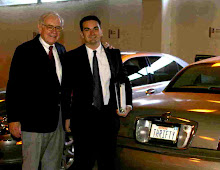Warren Buffett to give his money away... now!
To me, though, his rationale always made sense. The longer he waited to give to charity, the more he could give when the time came. Mr. Buffett is truly a money machine, so he could give, say, $40 billion today at age 75 or he could wait and give more than $160 billion upon death - assuming he dies at age 85 and a conservative (for Berkshire) growth rate of 15% per annum. That is, $40 billion * (1.15)^10 = $161 billion
Why would he do this? Presumably because he felt there were issues so pressing that it was more important to address them now than to address them later with more money. This issue arose several years ago when he became involved with the Nuclear Threat Initiative (NTI), which tackles “the single largest threat to mankind” as Buffett himself described it, nuclear weapons in the hands of terrorists. In an interview with Ted Koppel last year, Buffett explained his departure from his general policy to withhold charitable giving until his death by saying that there simply wasn’t time to waste, that this issue needed to be addressed immediately.
And so I would expect that this was the primary reason why he decided to give early, although it is speculated that the untimely death of his wife in 2004 was a contributing factor as well. Susan Buffett was the champion of the Buffett Foundation, and Warren always expected her to carry out its purpose upon his death. But now that she is gone, apparently, Mr. Buffett feels most comfortable leaving his fortune in the hands of the Gates Foundation. This is quite a compliment to his friend Bill Gates, who just recently left most of his responsibilities at Microsoft so he could focus on his foundation.
I think it is emblematic of Mr. Buffett’s truly outstanding character and humility that he would choose to disperse his wealth in such a philanthropic way. His children will get little of it, since they are already so fortunate themselves. Moreover, as he himself once said, “When society showers money upon you just because you have some peculiar talent, I think society has a large claim on that wealth.”
It is easy to assume that a man so wealthy is arrogant and selfish, but Warren Buffett is not. In fact, he is one of the most pleasant and genuine personalities I have been exposed to. When I first began to learn about the man, I expected that eventually I would uncover an objectionable and disappointing quality that would sour me on my admiration of him. But in all this time, I have found only good things. Mr. Buffett once said “Tell me who a person’s heroes are and I can tell you how that person will turn out.” I hope he is right, because Warren Buffett is my hero…


